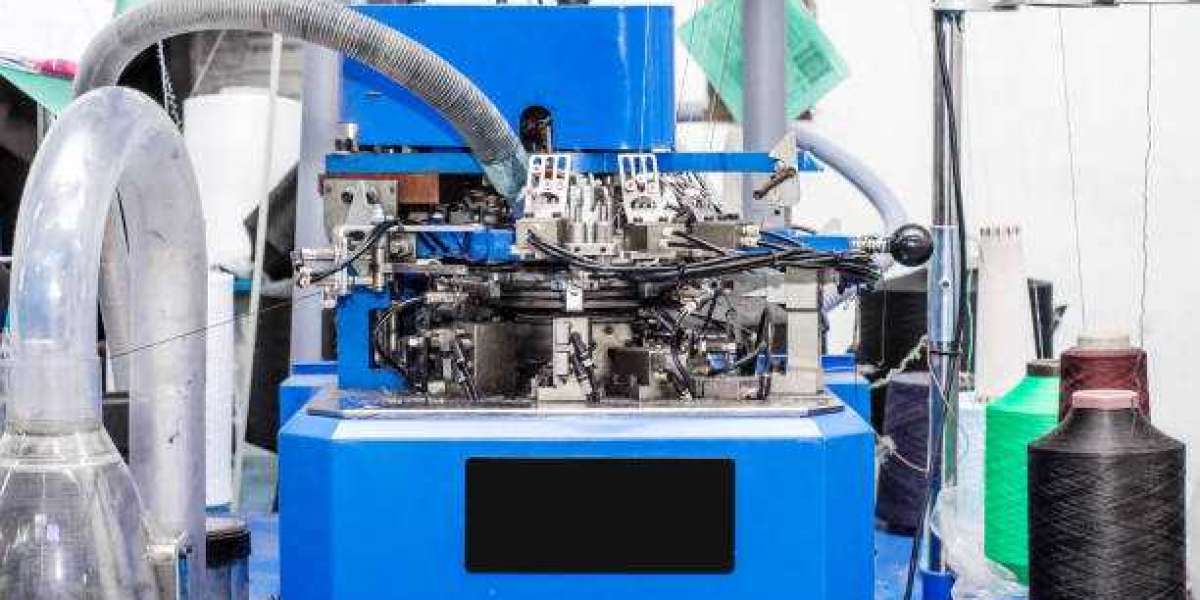Overview of the Motorcycle Airbag Market
The motorcycle airbag market is experiencing rapid growth due to increasing concerns about rider safety and advancements in motorcycle safety technology. Motorcycle airbags are designed to protect riders from severe injuries during accidents by deploying a cushion of air upon impact. These safety systems are increasingly being incorporated into motorcycle gear such as jackets, vests, and even integrated into the motorcycle itself.
The global motorcycle airbag market is anticipated to grow at a CAGR of 12.8% during the forecast period of 2024-2032, driven by factors such as the rising demand for advanced safety features, growing awareness about motorcycle safety, and the implementation of stricter safety regulations worldwide. This article explores the market's size, share, dynamics, trends, growth opportunities, challenges, and the competitive landscape.
Market Size and Share of the Motorcycle Airbag Market
Market Size
The global motorcycle airbag market has witnessed significant growth due to the increasing adoption of airbag systems in both the motorcycle industry and motorcycle protective gear market. The market size is expected to continue expanding as motorcycle safety technologies evolve and riders seek to enhance their protection on the road.
The market's growth is largely attributed to the increased availability of motorcycle airbag systems in consumer markets, which has contributed to the market's upward trajectory. As of 2023, the market is valued at approximately USD 350 million, and it is projected to expand significantly during the forecast period, reaching a value of approximately USD 1,500 million by 2032.
Market Share
North America and Europe currently hold the largest shares of the motorcycle airbag market, owing to high motorcycle adoption rates, stricter safety regulations, and increased awareness of safety technologies. The Asia-Pacific region is expected to exhibit the highest growth, driven by rapid economic development, rising disposable income, and a growing middle-class population in countries such as India and China.
Market Dynamics Trends
Key Drivers of Growth
Increasing Demand for Motorcycle Safety Features
With the rising number of motorcycle accidents globally, the demand for enhanced safety features is growing. Riders and manufacturers are increasingly focusing on technologies that can protect riders from serious injuries, boosting the adoption of motorcycle airbags.Strict Safety Regulations and Standards
Governments and regulatory bodies in developed regions like Europe and North America are implementing stringent safety regulations for motorcycle manufacturing and protective gear. These regulations often mandate the inclusion of airbags and other advanced safety features in motorcycles, further driving market growth.Technological Advancements
The development of more sophisticated airbag systems, including those that are lightweight, compact, and more effective in providing protection, is contributing to the widespread adoption of motorcycle airbags. Innovations such as integrated motorcycle airbag vests and jackets are providing an enhanced level of protection and convenience.Rising Awareness about Road Safety
As road safety awareness increases among both riders and manufacturers, there is a growing emphasis on equipping motorcycles with advanced safety technologies. This is driving the uptake of airbag systems as part of comprehensive safety gear for motorcyclists.
Key Trends
Integration of Airbags into Motorcycle Jackets and Vests
The trend towards integrating airbag technology into jackets and vests, as opposed to just the motorcycles themselves, is gaining traction. These wearable airbags offer a higher level of protection and can be easily worn by the rider, ensuring that safety is never compromised.Shift Towards Lightweight and Compact Airbags
Manufacturers are focusing on developing airbag systems that are lightweight and compact. This trend is particularly important in the motorcycle airbag market, where the comfort and mobility of the rider are crucial. The trend toward smaller, more efficient airbags ensures that safety does not come at the cost of comfort.Rise of Smart Safety Gear
The integration of smart technologies into safety gear is another emerging trend. For instance, some airbag systems are now equipped with sensors that detect an impending crash, allowing for faster deployment. These smart airbags can work in conjunction with other technologies, such as anti-lock braking systems (ABS), to offer a more holistic safety solution.
Get a free sample request:https://www.expertmarketresearch.com/reports/motorcycle-airbag-market/requestsample
Growth Prospects for the Motorcycle Airbag Market
Regional Growth Analysis
North America
North America is a dominant region in the motorcycle airbag market, driven by high motorcycle adoption rates and stringent safety regulations. The U.S. leads in terms of the adoption of motorcycle safety technologies, including airbags, with both regulatory pressures and consumer demand pushing manufacturers to innovate.Europe
Europe is another key market, with countries like Germany, Italy, and France having strong motorcycle cultures and advanced road safety regulations. European regulations are setting a high bar for safety, prompting an increased demand for airbag-equipped motorcycles and protective gear.Asia-Pacific
The Asia-Pacific region is expected to witness the highest growth rate in the coming years. Rapid urbanization, a booming middle class, and increasing awareness about motorcycle safety are driving the demand for advanced safety features in countries such as India, China, and Southeast Asian nations.Rest of the World (RoW)
The Rest of the World (RoW), including Latin America and the Middle East, is also expected to experience moderate growth. Motorcycle usage is increasing in these regions, with more people opting for motorcycles as affordable transportation options. However, the adoption of airbag systems is still in the nascent stages and will require time to catch up to the developed regions.
Market Opportunities and Challenges
Opportunities
Emerging Markets
The expansion of motorcycle sales in emerging markets presents a significant opportunity for the airbag market. Countries like India, Indonesia, and Brazil are expected to see increased demand for motorcycles with enhanced safety features, including airbags.Technological Advancements in Airbags
Continuous innovation in airbag technology, such as faster deployment times, more durable materials, and advanced sensors, presents new opportunities for market growth. Manufacturers who focus on research and development will benefit from these advancements by offering more effective and cost-efficient airbag solutions.Collaboration with Motorcycle Manufacturers
Partnerships between airbag manufacturers and major motorcycle brands can accelerate the adoption of airbag systems in motorcycles. These collaborations can lead to the development of integrated airbag systems that are tailored to specific models, improving both the effectiveness and cost-efficiency of the technology.
Challenges
High Manufacturing Costs
One of the key challenges for the motorcycle airbag market is the high cost of production. Airbag systems, especially those integrated into motorcycle gear, require sophisticated technology and materials, which can make them expensive. This could limit adoption, especially in price-sensitive markets.Lack of Awareness in Emerging Markets
While awareness about motorcycle safety is high in developed regions, it is still relatively low in emerging markets. Educating consumers and manufacturers about the benefits of motorcycle airbags is crucial for market penetration in these regions.Compatibility and Standardization Issues
The integration of airbag systems into existing motorcycle designs can sometimes present compatibility challenges. There is also a lack of standardization across the market in terms of airbag technology and deployment systems, which could hinder widespread adoption.
Competitive Landscape
Key Players in the Global Motorcycle Airbag Market
The global motorcycle airbag market is highly competitive, with several key players contributing to its growth. These companies are investing in research and development to innovate airbag systems and gain a competitive edge.
Honda Motor Co., Ltd.
Honda is one of the leading players in the motorcycle airbag market. The company has made significant advancements in integrating airbag technology into motorcycles, particularly in its high-end models. Honda continues to focus on rider safety by developing advanced airbag systems and other safety features.Helite Moto
Helite is a prominent manufacturer of motorcycle airbag vests, jackets, and other protective gear. Known for its high-quality products, the company focuses on rider safety by providing wearable airbag systems that are effective in mitigating injuries during a crash.Mugen Denko Co., Ltd.
Mugen Denko specializes in developing advanced airbag systems for both motorcycles and motorcycles gear. The company is known for its innovative products that combine lightweight materials and efficient airbag deployment systems, offering riders a higher level of protection.Dainese S.p.A.
Dainese is a leading Italian manufacturer of motorcycle protective gear, including airbag jackets and vests. Dainese is renowned for its technological innovations and continues to develop advanced airbag systems to enhance rider protection and safety.Others
Other notable players in the market include Alpinestars, Schuberth, and Airbag Protection, each offering specialized motorcycle airbag solutions. These players focus on improving safety features and expanding their product portfolios to cater to the growing demand.
The motorcycle airbag market is set to experience significant growth, driven by increasing demand for advanced safety features, technological advancements, and stricter regulations. With a projected CAGR of 12.8% from 2024 to 2032, the market is poised to reach a value of USD 1,500 million by 2032.
Key players such as Honda Motor Co., Helite Moto, and Dainese are leading the way in innovation and development of airbag systems. Despite challenges like high manufacturing costs and lack of awareness in emerging markets, the motorcycle airbag market offers significant growth opportunities, especially in developing regions and through technological advancements.














